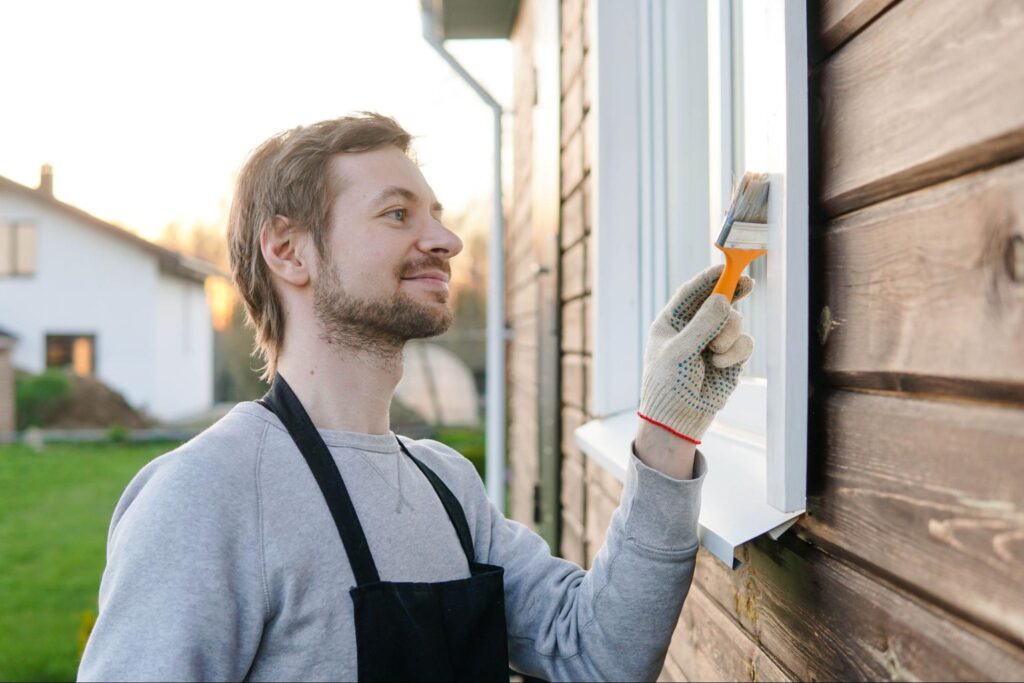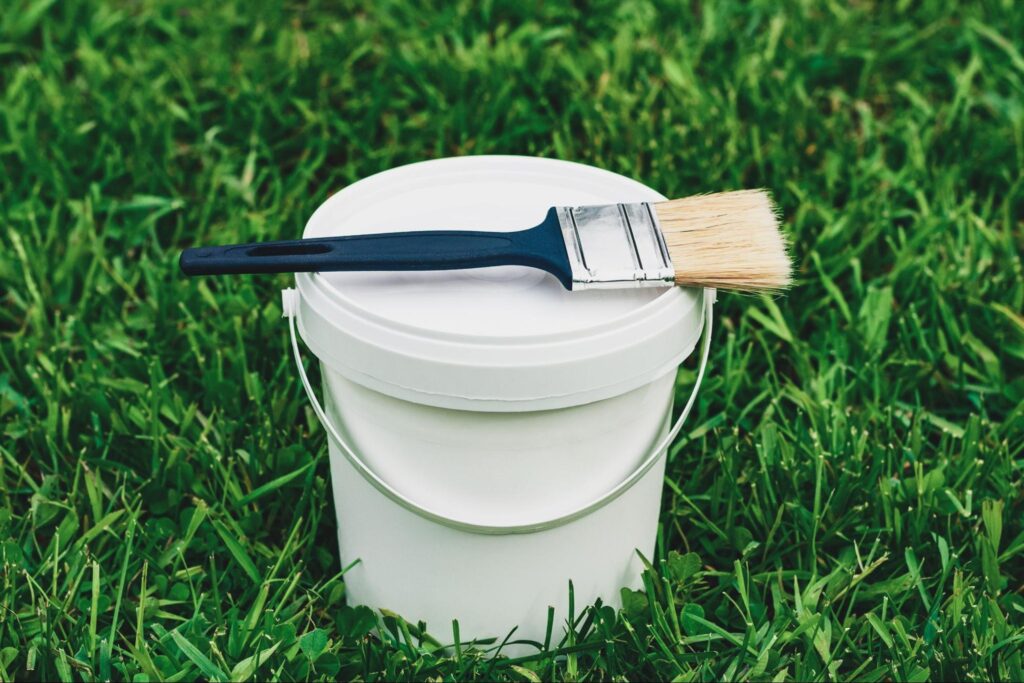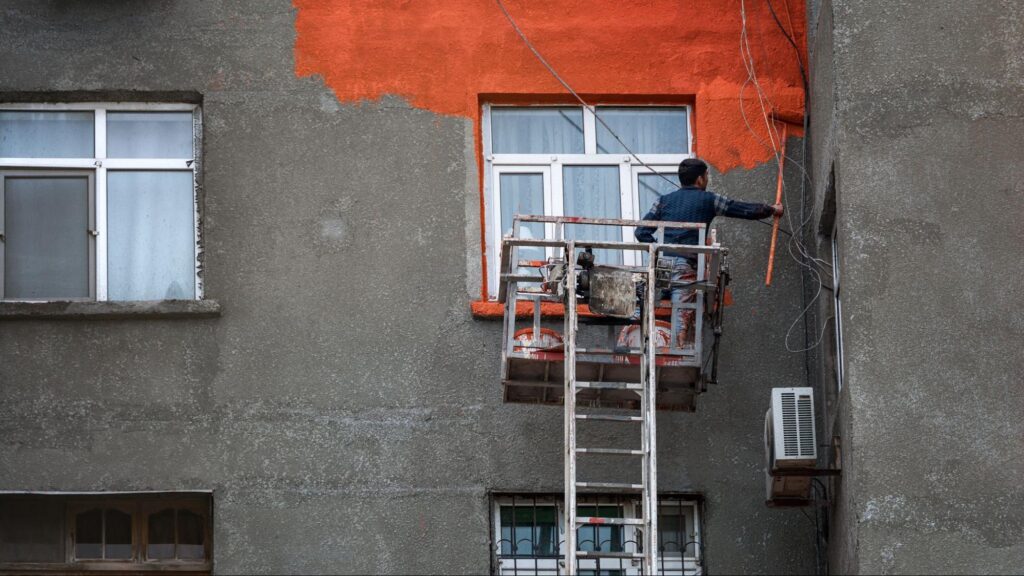
Your home’s exterior says a lot before anyone walks inside. A fresh coat of paint isn’t just about color—it protects, preserves, and adds real value. However, the cost of painting exterior surfaces can leave homeowners unsure of where to begin. From quotes that swing wildly to hidden fees that stack up, it’s not always clear what you’re paying for. Knowing what affects the price helps you make a wise decision without wasting time or money.
What Drives the Cost of Painting Exterior Surfaces
Some painting costs are obvious, and others are hidden in the fine print. From prep work to surface type, every detail affects your final bill. Knowing what factors affect your bill can help you plan smarter and avoid surprise charges.
How Home Size Affects Painting Exterior Costs
Larger homes require more paint, labor, and time. The bigger the surface area, the higher the overall expense. Height and layout can also increase the complexity and price. Home size is often the single most significant factor in residential painting costs.
Size and Complexity of the Structure
Bigger homes require more paint, labor, and time. Two-story homes take longer because of the ladder setups and safety gear. Odd shapes, trim, and overhangs can raise the cost even more if the crew needs scaffolding or lifts, which adds to the final bill. A simple ranch home will cost less than a tall Victorian with peaks and porches.
Type and Condition of the Exterior Surface
What your home is made of affects how much you’ll pay. Wood, stucco, vinyl, and brick all need different types of paint and prep. Damaged or weathered surfaces require repairs before painting even starts. If paint is peeling or flaking, extra labor is required to remove it. Old or rough siding can also soak up more paint, raising the cost.
Quality of Paint and Materials Used
Not all paints are created equal. Higher-quality paints cost more but last much longer. Cheaper paint may fade in a few years, forcing you to repaint sooner. Materials like primer, caulk, and masking tape all add up. Professional painters also use high-end brushes, rollers, and sprayers, which factor into their pricing.
Labor Costs When Painting Exterior Surfaces
Labor is usually the biggest line item in any exterior painting quote. You’re not just paying for brush strokes—you’re paying for skill, speed, and the peace of mind that it gets done right. Hiring the right team can make or break the outcome. You need to know what you’re being charged for before committing.
Professional Painters vs. DIY Costs
Hiring a professional crew often saves time and delivers better results. But it comes at a price—typically $1,500 to $6,000 for most homes. Doing it yourself might sound cheaper, but buying gear, ladders, and safety tools adds up fast. Plus, prep or technique mistakes can shorten the paint job’s life. Weigh your time, safety, and long-term quality before going the DIY route.
Hourly vs. Project-Based Pricing
Some painters charge by the hour; others offer flat rates. Hourly fees usually run from $20 to $50 per painter. A whole crew on-site for several days adds up quickly. Project-based quotes often include prep, paint, and cleanup bundled together. Always ask for a detailed list of what’s included to avoid surprise add-ons.
Regional Pricing Differences
Where you live plays a significant role in what you’ll pay. Urban areas tend to have higher labor costs due to demand. Remote or rural homes might have travel charges built in. In some states, seasonal changes affect rates during peak months. Always compare local quotes and reviews to get a fair deal.

Prep Work and Cleanup Costs in Painting Exterior Surfaces
Prepping the surface is just as important as painting it. If this step is rushed or skipped, the paint won’t last. Cleanup also matters, especially if there’s debris or paint splatter. Painting exterior surfaces takes more than a brush—it takes proper setup and follow-through.
Pressure Washing and Cleaning
Before any paint touches your house, it needs to be clean. Pressure washing removes dirt, mold, old paint, and mildew. It usually costs between ten and fifty cents per square foot. Skipping this step risks adhesion problems down the road. A clean surface ensures that the paint goes on smoothly and lasts longer.
Scraping, Sanding, and Priming
Old paint must be scraped off if it’s flaking or peeling. Sanding smooths out rough areas and helps paint stick better. Primer is applied next, especially on raw or exposed surfaces. This prep work is time-consuming and adds to labor costs. But skipping it shortens the lifespan of the paint job by years.
Protecting Surrounding Areas
Good painters don’t just cover the house—they protect everything around it, too. Windows, plants, lights, and paths must be masked or covered. This prep keeps paint from splattering where it shouldn’t go. Drop cloths, painter’s tape, and plastic sheeting are all part of the job. Make sure these details are included in your estimate.
Cost Breakdown by Exterior Surface Type
Not every surface costs the same to paint. Texture, material, and how the paint interacts with it all influence cost. Painting exterior surfaces means knowing what’s underneath before giving a price. Here’s how different surfaces stack up in cost:
Wood Siding
Wood siding is standard but requires frequent upkeep. Expect to pay one to three dollars per square foot. It may need sanding, caulking, or even replacing boards. Wood absorbs paint easily, often requiring multiple coats. Moisture damage also drives up prep time and repair costs.
Stucco and Masonry
Due to its texture, painting stucco is more labor-intensive. Cracks need sealing and often require a flexible patching compound. Expect to pay one dollar and fifty cents to four dollars per square foot. These surfaces soak up primer and paint, so materials cost more. Stucco also takes longer to coat evenly without missing spots.
Vinyl and Aluminum Siding
Vinyl and aluminum siding are less porous and easier to paint. They are usually cheaper, ranging from a dollar to two dollars and fifty cents per square foot. Special paints are needed to stick to these smooth materials. The surface should be cleaned thoroughly but often doesn’t need primer. These materials can’t absorb moisture, which helps paint last longer.
Hidden Costs When Painting Exterior Surfaces
Painting the exterior seems straightforward until the surprise charges roll in. Many homeowners forget to account for small but essential extras. These details may not be in the quote unless you ask. Knowing them upfront helps avoid frustration and keeps your budget realistic.
Wood Rot and Minor Repairs
Painters often discover wood rot or damage during prep. These issues need to be fixed before paint can go on. Most painting companies can handle minor repairs, but it costs more. Replacing trim, fascia, or siding can add a few hundred dollars. It’s smart to inspect your exterior before getting quotes.
Permit Fees in Regulated Areas
Some cities or homeowners’ associations require permits for exterior changes, including painting in historic or tightly zoned areas. Permits may cost $50 to $300, depending on your location. Skipping this can lead to fines or the need to redo the job. Always check your local rules before you start.

Color Changes and Multiple Coats
Going from dark to light—or light to dark—requires extra coats, each adding labor and material costs. Bold colors may also require special primers to block bleed-through. Don’t assume all color changes cost the same. Always ask how your chosen shade affects the final price.
Disposal of Waste and Hazardous Materials
Old paint chips, plastic coverings, and empty cans need proper disposal. If lead paint is present, special handling is required by law. Some companies include cleanup in their price; others charge a disposal fee. Ask about this early so it doesn’t catch you off guard later.
Long-Term Value of Painting Exterior Surfaces
A well-done paint job does more than make your home look nice. It protects your home from moisture, pests, and sun damage. Over time, that means fewer repairs and higher home value. Painting exterior surfaces can be a wise investment with strong returns.
Impact on Property Value
Fresh paint makes your home stand out instantly. Buyers see a well-maintained house and expect fewer issues. That curb appeal helps drive interest and higher offers. A painted exterior makes your home look cared for, even if you’re not selling. That boosts neighborhood value and pride, too.
Durability and Maintenance Cycles
Better paint lasts longer, saving money down the road. Top-tier paints can hold up for eight to 15 years, while cheaper options might need to be redone in just three to five. The climate also plays a role—sun, wind, and rain can wear paint faster. Picking the right paint for your region extends its life.
How to Cut Exterior Painting Costs Without Risks
You don’t need to cut corners to cut costs. There are innovative ways to lower your painting bill without risking quality. Painting exterior surfaces can fit your budget if you plan right. Timing, prep, and shopping around go a long way.
Get Multiple Quotes and Ask Questions
One quote won’t tell you if you’re getting a fair deal. Ask at least three painters to assess the project. Ensure each includes the exact details—paint type, prep, and cleanup. Don’t settle for vague estimates. A clear breakdown gives you room to negotiate and compare.
Paint During Off-Peak Seasons
Painters get busier in spring and summer. You might get a discount during slow seasons like early spring or late fall. Just be sure the weather is dry and warm enough to paint. Booking in advance can lock in a better rate. Some pros even offer package deals to fill their calendars.
Handle Some Prep Yourself
Simple prep can shave hours off the job. Trimming bushes, moving outdoor furniture, or washing siding can reduce labor time. Just make sure your work meets the painter’s standards. Leave anything risky or technical to the crew. Always discuss your prep plans upfront.
Confident Budgeting for Painting Exterior Surfaces
Understanding where your money goes helps you stay in control. A reliable painter adds value beyond just the finished look. Careful planning reduces stress and avoids surprise costs. Knowing the details lets you make smarter decisions that protect your home and wallet:
Know What You’re Paying For
A paint job includes more than what you see. Prep, cleanup, materials, and tools are part of the cost. If one quote seems too low, it may skip critical steps. Quality work may cost more, but it lasts much longer. Understanding the whole process helps you make the right choice.
Think Long-Term, Not Just Short-Term
Cheap work can cost you more later. Paint that chips or fades fast needs redoing sooner. Paying more for the proper prep and products saves hassle. You’ll get years of protection and fewer repairs. Quality is the better value when you take the long view.
Make Painting Exterior Surfaces a Worthwhile Investment
A fresh exterior doesn’t just change how your home looks—it changes how you feel when you pull into the driveway. It’s one of the few upgrades that simultaneously deliver visual impact, long-term protection, and added value. Don’t wait until the peeling starts or the color fades beyond recognition. Make the choice now, not later, to invest in your home with clarity and confidence. The right paint job won’t just cover your house—it’ll show you care about every inch of it.
Don’t just guess the cost—see what the pros say. Explore more insights on the Euro Painting blog today.

